1. Fung MK, Eder AF, Spitalnik SL, Westhoff CM. 2017. Technical Manual. 19th ed. American Association of Blood Banks;Bethesda:
4. Olivier EN, Qiu C, Velho M, Hirsch RE, Bouhassira EE. 2006; Large-scale production of embryonic red blood cells from human embryonic stem cells. Exp Hematol. 34:1635–42. DOI:
10.1016/j.exphem.2006.07.003. PMID:
17157159.

5. Batta K, Menegatti S, Garcia-Alegria E, Florkowska M, Lacaud G, Kouskoff V. 2016; Concise review: recent advances in the in vitro derivation of blood cell populations. Stem Cells Transl Med. 5:1330–7. DOI:
10.5966/sctm.2016-0039. PMID:
27388244. PMCID:
PMC5031184.

6. Giarratana MC, Kobari L, Lapillonne H, Chalmers D, Kiger L, Cynober T, et al. 2005;
Ex vivo generation of fully mature human red blood cells from hematopoietic stem cells. Nat Biotechnol. 23:69–74. DOI:
10.1038/nbt1047. PMID:
15619619.

7. Douay L, Giarratana MC. 2009;
Ex vivo generation of human red blood cells: a new advance in stem cell engineering. Methods Mol Biol. 482:127–40. DOI:
10.1007/978-1-59745-060-7_8. PMID:
19089353.
8. Chang TM. 2006; Evolution of artificial cells using nanobiotechnology of hemoglobin based RBC blood substitute as an example. Artif Cells Blood Substit Immobil Biotechnol. 34:551–66. DOI:
10.1080/10731190600973808. PMID:
17090428.

10. Shah S, Huang X, Cheng L. 2014; Concise review: stem cell-based approaches to red blood cell production for transfusion. Stem Cells Transl Med. 3:346–55. DOI:
10.5966/sctm.2013-0054. PMID:
24361925. PMCID:
PMC3952923.

11. Lee E, Sivalingam J, Lim ZR, Chia G, Shi LG, Roberts M, et al. 2018; Review: in vitro generation of red blood cells for transfusion medicine: progress, prospects and challenges. Biotechnol Adv. 36:2118–28. DOI:
10.1016/j.biotechadv.2018.09.006. PMID:
30273713.

12. Takahashi K, Yamanaka S. 2006; Induction of pluripotent stem cells from mouse embryonic and adult fibroblast cultures by defined factors. Cell. 126:663–76. DOI:
10.1016/j.cell.2006.07.024. PMID:
16904174.

13. McLaren A. 2001; Ethical and social considerations of stem cell research. Nature. 414:129–31. DOI:
10.1038/35102194. PMID:
11689959.

15. Gao J, Yan XL, Li R, Liu Y, He W, Sun S, et al. 2010; Characterization of OP9 as authentic mesenchymal stem cell line. J Genet Genomics. 37:475–82. DOI:
10.1016/S1673-8527(09)60067-9. PMID:
20659712.

16. Nakano T, Kodama H, Honjo T. 1994; Generation of lymphohematopoietic cells from embryonic stem cells in culture. Science. 265:1098–101. DOI:
10.1126/science.8066449. PMID:
8066449.

17. Chen PK, Lin GL, Chang HH, Sun DS. 2015; Megakaryocytic differentiation of mouse embryonic stem cells via coculture with immortalized OP9 stromal cells. Exp Cell Res. 339:44–50. DOI:
10.1016/j.yexcr.2015.10.002. PMID:
26439194.

18. Trakarnsanga K, Wilson MC, Heesom KJ, Andrienko TN, Srisawat C, Frayne J. 2018; Secretory factors from OP9 stromal cells delay differentiation and increase the expansion potential of adult erythroid cells
in vitro. Sci Rep. 8:1983. DOI:
10.1038/s41598-018-20491-1. PMID:
29386568. PMCID:
PMC5792592.
19. Vodyanik MA, Bork JA, Thomson JA, Slukvin II. 2005; Human embryonic stem cell-derived CD34+ cells: efficient production in the coculture with OP9 stromal cells and analysis of lymphohematopoietic potential. Blood. 105:617–26. DOI:
10.1182/blood-2004-04-1649. PMID:
15374881.

21. Baker D, Hirst AJ, Gokhale PJ, Juarez MA, Williams S, Wheeler M, et al. 2016; Detecting genetic mosaicism in cultures of human pluripotent stem cells. Stem Cell Rep. 7:998–1012. DOI:
10.1016/j.stemcr.2016.10.003. PMID:
27829140. PMCID:
PMC5106530.

22. Hur M, Moon HW, Kwon SW. Ortiz J, editor. 2011. ABO-incompatible kidney transplantation. Understanding the complexities of kidney transplantation. 1st ed. IntechOpen;p. 332–48. DOI:
10.5772/20514.

23. Dias J, Gumenyuk M, Kang H, Vodyanik M, Yu J, Thomson JA, et al. 2011; Generation of red blood cells from human induced pluripotent stem cells. Stem Cells Dev. 20:1639–47. DOI:
10.1089/scd.2011.0078. PMID:
21434814. PMCID:
PMC3161101.

24. Revilla A, González C, Iriondo A, Fernández B, Prieto C, Marín C, et al. 2016; Current advances in the generation of human iPS cells: implications in cell-based regenerative medicine. J Tissue Eng Regen Med. 10:893–907. DOI:
10.1002/term.2021. PMID:
25758460.

25. Dorn I, Klich K, Arauzo-Bravo MJ, Radstaak M, Santourlidis S, Ghanjati F, et al. 2015; Erythroid differentiation of human induced pluripotent stem cells is independent of donor cell type of origin. Haematologica. 100:32–41. DOI:
10.3324/haematol.2014.108068. PMID:
25326431. PMCID:
PMC4281310.

26. Nishino K, Arai Y, Takasawa K, Toyoda M, Yamazaki-Inoue M, Sugawara T, et al. 2018; Epigenetic-scale comparison of human iPSCs generated by retrovirus, Sendai virus or episomal vectors. Regen Ther. 9:71–8. DOI:
10.1016/j.reth.2018.08.002. PMID:
30525077. PMCID:
PMC6222281.

27. Eto K, Murphy R, Kerrigan SW, Bertoni A, Stuhlmann H, Nakano T, et al. 2002; Megakaryocytes derived from embryonic stem cells implicate CalDAG-GEFI in integrin signaling. Proc Natl Acad Sci U S A. 99:12819–24. DOI:
10.1073/pnas.202380099. PMID:
12239348. PMCID:
PMC130543.

28. Nakano T, Kodama H, Honjo T. 1996;
In vitro development of primitive and definitive erythrocytes from different precursors. Science. 272:722–4. DOI:
10.1126/science.272.5262.722. PMID:
8614833.

29. Choi KD, Yu J, Smuga‐Otto K, Salvagiotto G, Rehrauer W, Vodyanik M, et al. 2009; Hematopoietic and endothelial differentiation of human induced pluripotent stem cells. Stem Cells. 27:559–67. DOI:
10.1634/stemcells.2008-0922. PMID:
19259936. PMCID:
PMC2931800.

30. Kobari L, Yates F, Oudrhiri N, Francina A, Kiger L, Mazurier C, et al. 2012; Human induced pluripotent stem cells can reach complete terminal maturation:
in vivo and
in vitro evidence in the erythropoietic differentiation model. Haematologica. 97:1795–803. DOI:
10.3324/haematol.2011.055566. PMID:
22733021. PMCID:
PMC3590085.

31. Hansen M, Varga E, Aarts C, Wust T, Kuijpers T, von Lindern M, et al. 2018; Efficient production of erythroid, megakaryocytic and myeloid cells, using single cell-derived iPSC colony differentiation. Stem Cell Res. 29:232–44. DOI:
10.1016/j.scr.2018.04.016. PMID:
29751281.

32. Varga E, Hansen M, van den Akker E, von Lindern M. Mehanna RA, editor. Erythropoiesis and megakaryopoiesis in a dish. Cell culture. IntechOpen;2018. DOI:
10.5772/intechopen.80638.

33. Lapillonne H, Kobari L, Mazurier C, Tropel P, Giarratana MC, Zanella-Cleon I, et al. 2010; Red blood cell generation from human induced pluripotent stem cells: perspectives for transfusion medicine. Haematologica. 95:1651–9. DOI:
10.3324/haematol.2010.023556. PMID:
20494935. PMCID:
PMC2948089.

34. Southcott MJ, Tanner MJ, Anstee DJ. 1999; The expression of human blood group antigens during erythropoiesis in a cell culture system. Blood. 93:4425–35. DOI:
10.1182/blood.V93.12.4425. PMID:
10361141.

35. Shen J, Zhu Y, Lyu C, Feng Z, Lyu S, Zhao Y, et al. 2020; Sequential cellular niches control the generation of enucleated erythrocytes from human pluripotent stem cells. Haematologica. 105:e48–51. DOI:
10.3324/haematol.2018.211664. PMID:
31197070. PMCID:
PMC7012464.

36. de Back DZ, Kostova EB, van Kraaij M, van den Berg TK, van Bruggen R. 2014; Of macrophages and red blood cells; a complex love story. Front Physiol. 5:9. DOI:
10.3389/fphys.2014.00009. PMID:
24523696. PMCID:
PMC3906564.

37. Vodyanik MA, Slukvin II. Hematoendothelial differentiation of human embryonic stem cells. Curr Protoc Cell Biol. 2007; Chapter 23:Unit 23.6. DOI:
10.1002/0471143030.cb2306s36. PMID:
18228507.

38. Basu S, Campbell HM, Dittel BN, Ray A. Purification of specific cell population by fluorescence activated cell sorting (FACS). J Vis Exp. 2010; 1546:DOI:
10.3791/1546. PMID:
20644514. PMCID:
PMC3144656.

39. Gladwin MT, Kanias T, Kim-Shapiro DB. 2012; Hemolysis and cell-free hemoglobin drive an intrinsic mechanism for human disease. J Clin Invest. 122:1205–8. DOI:
10.1172/JCI62972. PMID:
22446184. PMCID:
PMC3314481.

40. Tursky ML, Loi TH, Artuz CM, Alateeq S, Wolvetang EJ, Tao H, et al. 2020; Direct comparison of four hematopoietic differentiation methods from human induced pluripotent stem cells. Stem Cell Rep. 15:735–48. DOI:
10.1016/j.stemcr.2020.07.009. PMID:
32763163. PMCID:
PMC7486192.

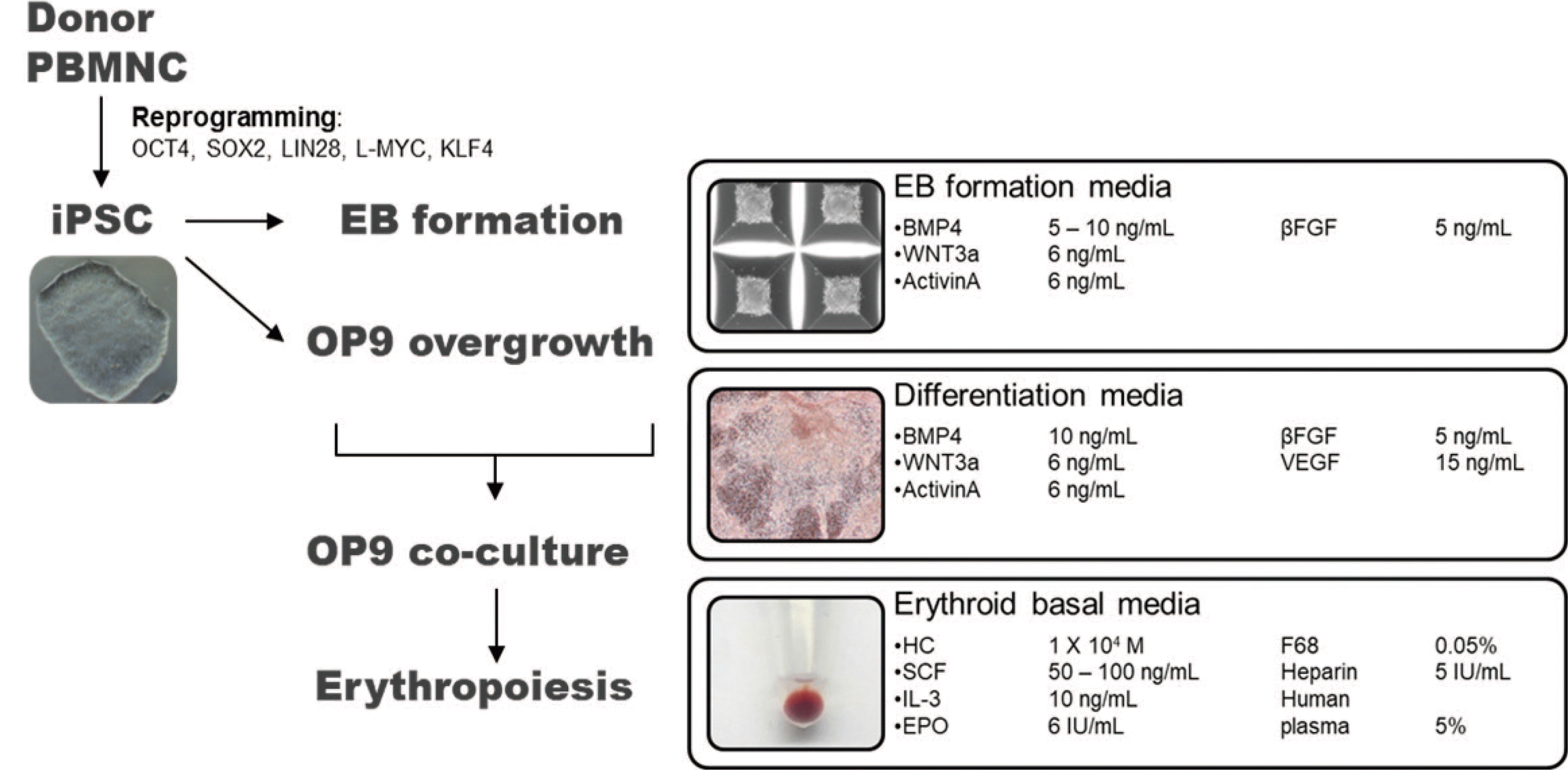
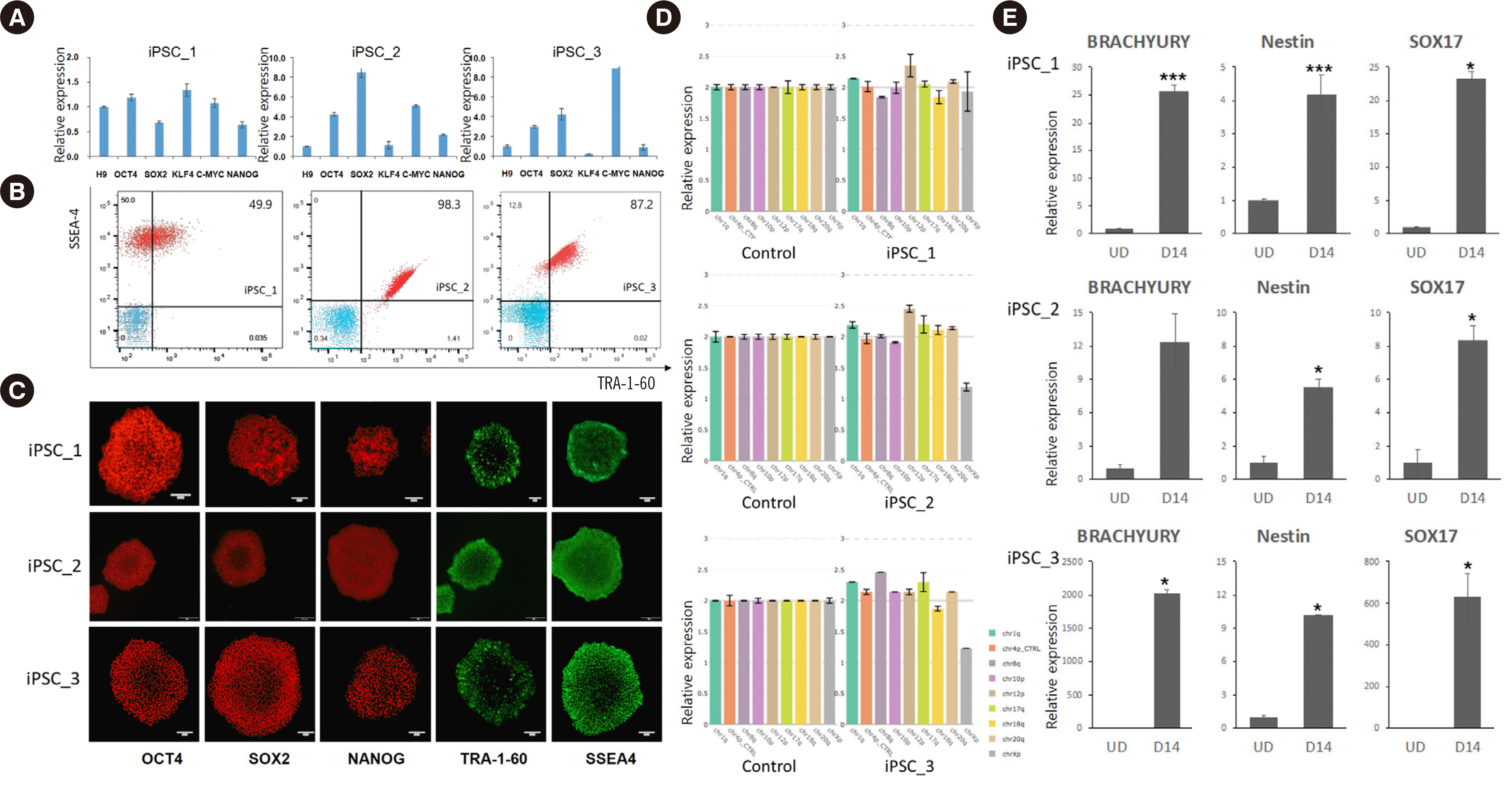
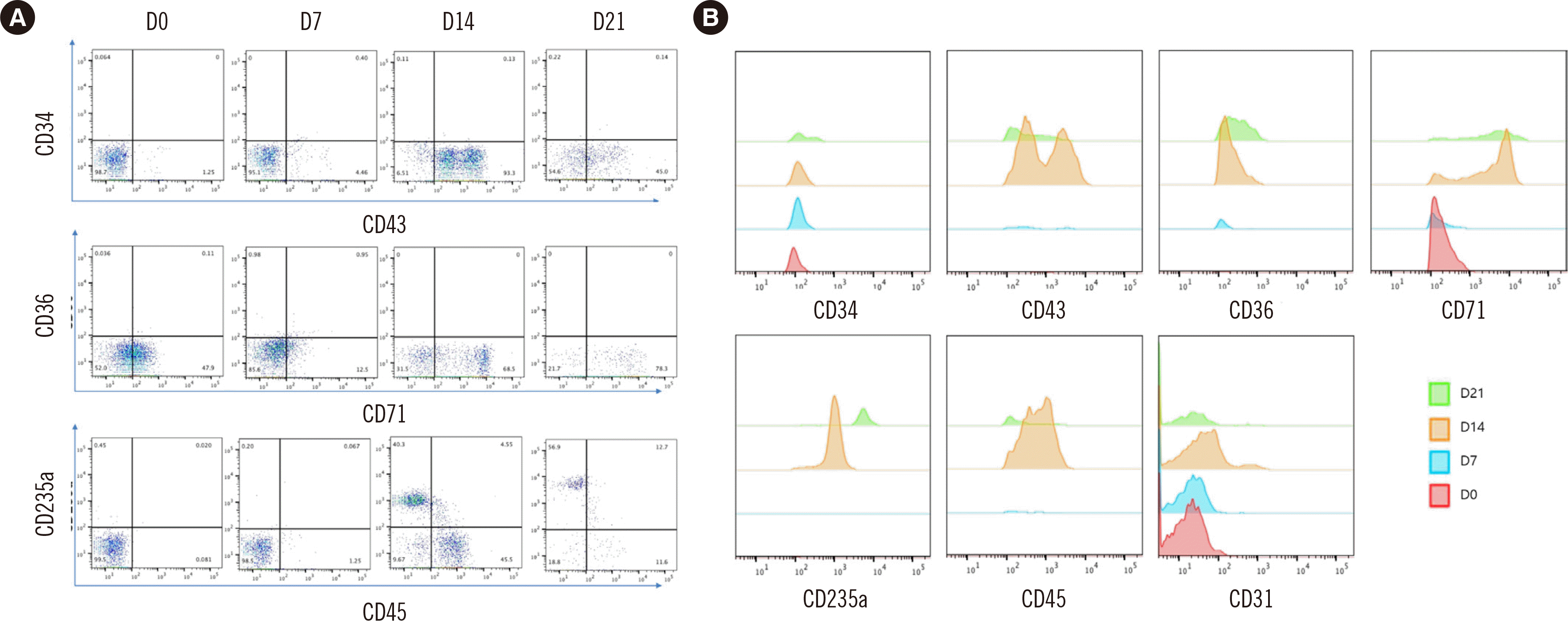
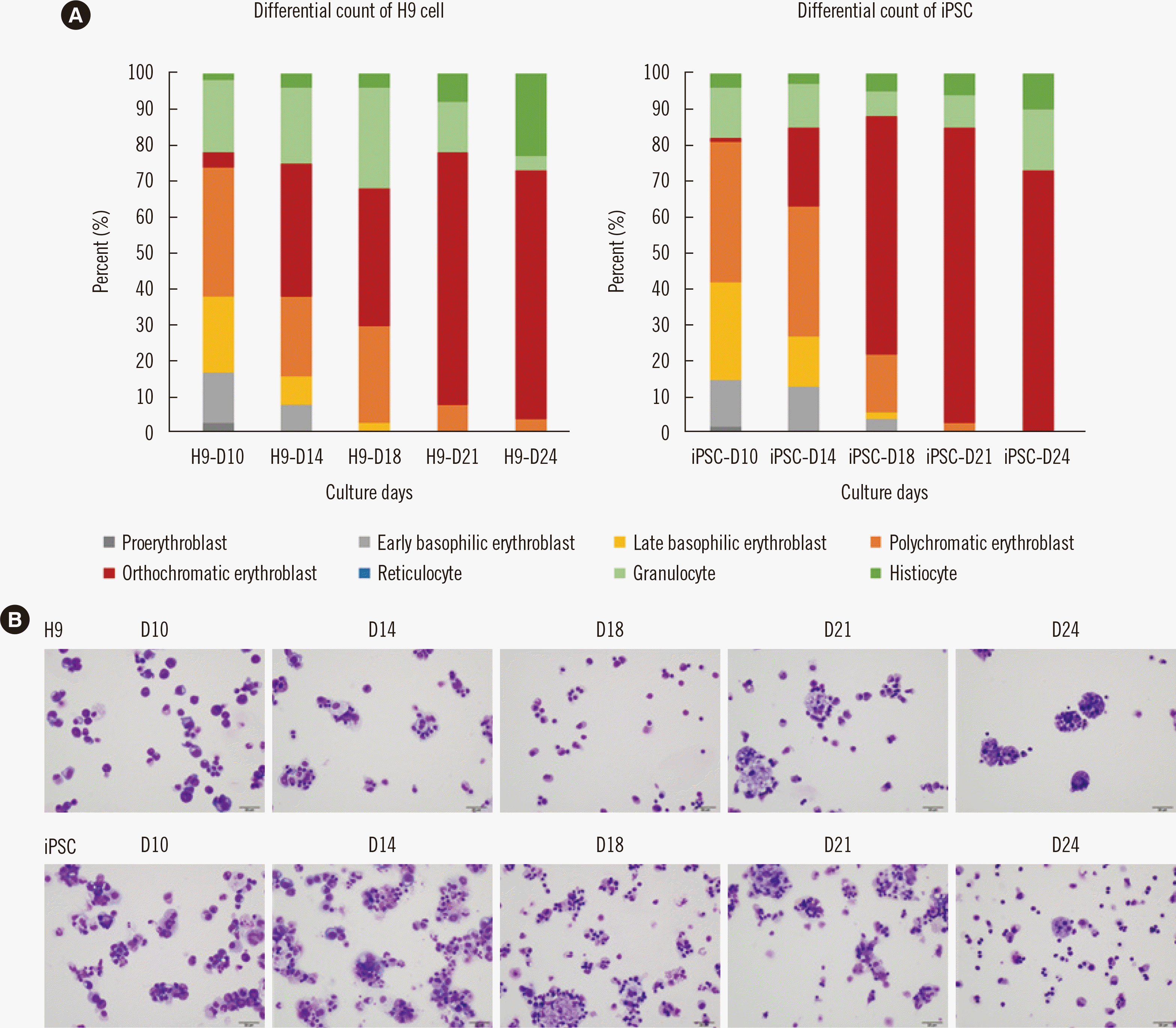
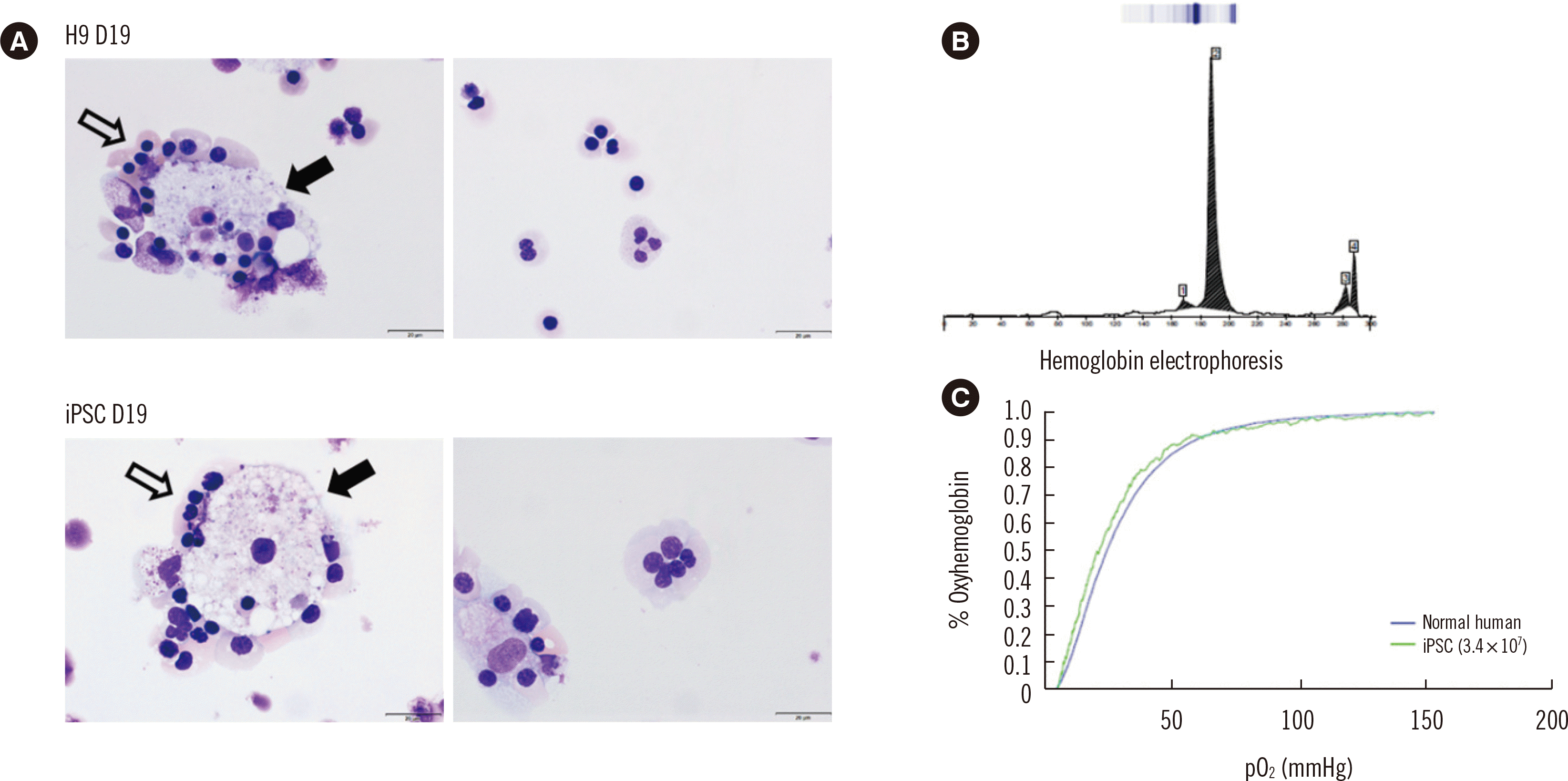





 PDF
PDF Citation
Citation Print
Print



 XML Download
XML Download